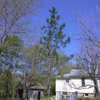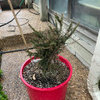Phyllocladus hypophyllus & Araucaria hunsteinii
arauquoia
13 years ago
Sponsored
Your Custom Bath Designers & Remodelers in Columbus I 10X Best Houzz
Has anyone had any experience with Phyllocladus hypophyllus? Since this species occurs in Brunei, Indonesia, Malaysia, Philippines, and Papua New Guinea, I'm assuming it would enjoy the hot and humid Southeastern USA. My next question is to what degree it is cold-hardy.
I have the same questions about Araucaria hunsteinii (Klinki or Klinkii), which also occurs in Papua New Guinea. Interestingly, Araucaria hunsteinii's botanical countryman, Araucaria cunninghamia, is quite cold-hardy.




mesterhazypinetum
salicaceae
tasmanii
arauquoiaOriginal Author
tasmanii
arida
cryptomeria